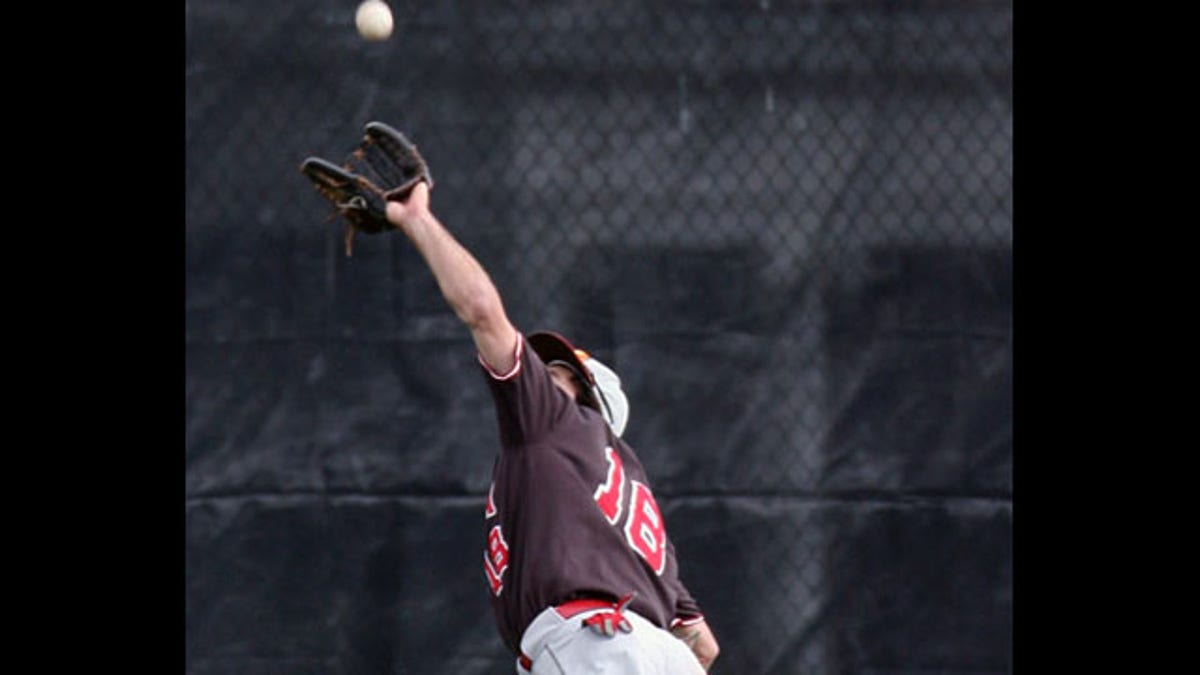
Researchers at Brown tested the three theories explaining how outfielders judge fly balls. It turns out to be a matter of optical acceleration cancellation. (David Silverman/Brown University)
Willie Mays' classic catch in the 1954 World Series -- in which he turned his back on a fly ball, raced full-speed toward the centerfield wall and caught the ball over his shoulder -- almost seemed to defy physics. How did he know where the ball would be? Science may have the answer.
A recent article in the Journal of Vision,titled "Catching Flyballs in Virtual Reality: A Critical Test of the Outfielder Problem," investigates the visual-motor control problem, through a virtual-reality simulation. The articles asks the question, how does the brain use visual information to guide action?
Or -- to put it in English -- how do you know where the ball will fall?
Researchers Philip Fink from New Zealand's Massey University, Patrick Foo from the University of North Carolina at Ashville and William H. Warren of Brown University confirmed one of three postulated theories about baseball outfielders: It's a matter of optical acceleration cancellation.
The three main theories:
1. Trajectory prediction. The fielder perceives the initial conditions of the ball's motion and compute its trajectory to predict where it will land.
2. Linear acceleration cancellation. The fielder runs so as to keep the apparent trajectory of the ball linear, such that it appears to move in a constant direction relative to the horizontal.
3. Optical acceleration cancellation. The fielder runs toward and away from the ball to cancel the perception of vertical acceleration.
Instead of predicting the ball's likely landing point, a successful outfielder's eyes continuously track the ball as its visual velocity increases or decreases. Then he runs backward or forward to compensate. Mays' classic catch is famous precisely because fielders rarely turn their backs on the ball.
"All the fielders need to do is track this optical variable and it will lead them to a successful catch," said Warren, professor of cognitive and linguistic sciences at Brown and the paper's senior author. "They don't have to do a lot of heavy computation in their heads to predict the landing point."
Warren said their results support the idea that the ballplayers do not necessarily predict a ball's landing point based on the first part of its flight, a theory described as trajectory prediction.
"The three existing theories all predict the same thing: successful catches with very similar behavior," said Warren. "We realized that we could pull them apart using virtual reality to create physically impossible fly ball trajectories."
To determine which theory was correct, the researchers programmed Brown University's virtual reality lab, the VENLab, to produce realistic fly balls and simulate catches. The team then lobbed virtual fly balls to a dozen experienced ballplayers. Because they were able to use the virtual reality lab to perturb the balls' vertical motion in ways that would not happen in reality, they were able to isolate different characteristics of each theory.
The researchers found that subjects tended to adjust their forward-backward movements depending on the perceived elevation angle of the incoming ball, and separately move from side to side to keep the ball at a constant bearing, consistent with the theory of optical acceleration cancellation (OAC).
The third theory, linear optical trajectory (LOT), predicted that the outfielder will run in a direction that makes the visual image of the ball appear to travel in a straight line, adjusting both forward-backward and side-to-side movements together.
Fink said these results focus on the visual information a ballplayer receives, and that future studies could bring in other variables, such as the effect of the batter's movements or sound.
"This is a classic example of visual-motor control, because the limits of human ability are really being tested," Warren said."If we can understand these key cases, it gives us some insight into how visual control works in more everyday situations."
Now that that's cleared up, it's time to tackle the next challenge: How do you hit a knuckleball?
